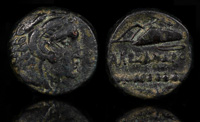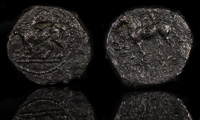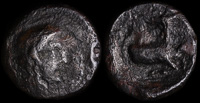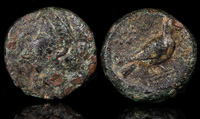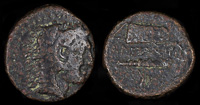Cyprus
Initial Mycenaean settlement at Kition is destroyed.
Approximate foundation of the Kingdom of Kourion.
Religious part of Kition is abandoned, though the rest remains in use.
Damasos is recorded as King of Kourion.
Kition comes under Egyptian domination.
Amathos is mentioned during the reign of Pharaoh Amasis II of Egypt.
498 BCE
Peace of Kallias, an agreement between Athens and Persia after a series of conflicts between them. In Cyprus, Amathos, Kelenderis, and Salamis remain under Persian control but maintains its local autonomy. Ephesos, Miletos, Priene, Klazomenai, and Phokaia also obtain some autonomy.
Abdemon deposes a Phoenician ruler and becomes King of Salamis.
Evagoras I takes the throne of Salamis from Abdemon.
Nikokles succeeds his father Evagoras I on the throne of Salamis.
Androkles of Amathos sails with the Aegean fleet of Pharnabazos III and Autophradates.
Beginning of reign of Pnytagoras in Salamis.
Artaxerxes III recognizes Pnytagoras as king of Salamis in exchange for loyalty.
The major cities in Cyprus – Salamis under Pnytagoras, Kourion, Paphos, and Soloi – rebel against Artaxerxes III Okhos. He sends Idreios along with the Athenian Phokion to quell the rebellion.
Androkles of Amathos, Pnytagoras of Salamis, and Pasikrates of Kourion join Alexander the Great at the Siege of Tyre, where their qinqueremes are destroyed.
The flagships of Pnytagoras of Salamis, Androkles of Amathos, and Pasikrates of Kourion are destroyed while anchored in the harbor of Tyre.
Pnytagoras of Salamis is given Tamasos, previously the territory of Pumiathon of Kition, by Alexander the Great.
Nikokreon of Salamis and Pasikrates of Soloi pay homage to Alexander III in Phoenicia and take part in games.
Nikokreon becomes king of Salamis with either the death or removal of Pnytagoras.
The Akropolis is constructed in Kourion.
Pumiathon of Kition agrees to an alliance with Antigonos Monophthalmos.
Pasikrates of Kourion rejects an alliance with Antigonos Monophthalmos and remains loyal to Ptolemy I Soter.
Ptolemy I Soter gives Seleukos I Nikator a small fleet, which he uses to force Asandros to ally with Ptolemy. He also takes Erythrai and besieges Kition along with Menelaos.
Eunostos of Soloi marries Eirene, daughter of Ptolemy I Soter and Thais.
Demetrios Poliorketes captures Cyprus from Ptolemy I Soter and Menelaus – including Salamis, Kourion, Soloi, Paphos, and Amathos.
Amathos, Soloi, and Salamis become part of the Ptolemaic Kingdom of Egypt under Ptolemy I Soter. They are incorporated into the Ptolemaic administrative system, as Cyprus becomes a strategic naval and commercial hub for the Ptolemies.
Ptolemy II Philadelphos founds a new city named Arsinoe, named for his wife Arsinoe II, on the ruins of Marion.
A temple to Astarte is erected in Kition.
An earthquake causes damage in Kourion.
Kition suffers a strong earthquake.
